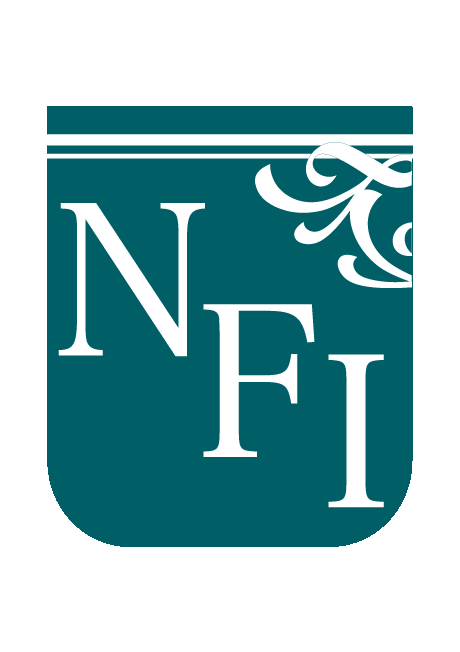New Food Industry 2024年 66巻 6月号
解 説
機能性表示食品における安全性試験の目標参加者数の提案
馬場 亜沙美 (BABA Asami),鈴木 直子 (SUZUKI Naoko),野田 和彦 (NODA Kazuhiko), 波多野 絵梨 (HATANO Eri),髙橋 徳行 (TAKAHASHI Noriyuki),中村 駿一 (NAKAMURA Shunichi),LIU XUN,柿沼 俊光 (KAKINUMA Toshihiro),山本 和雄 (YAMAMOTO Kazuo)
The target sample size for safety assessment in clinical trials involving Foods with Functional Claims.
Authors: Asami Baba 1*, Naoko Suzuki 1, Kazuhiko Noda 1, Eri Hatano 1, Noriyuki Takahashi 1, Shunichi Nakamura 1, Xun Liu 1, Toshihiro Kakinuma 1, Kazuo Yamamoto 1
* Corresponding author: Asami Baba 1
Affiliated institution: 1 ORTHOMEDICO Inc. [2F Sumitomo Fudosan Korakuen Bldg., 1-4-1 Koishikawa, Bunkyo-ku, Tokyo, 112-0002, Japan.]
平成27年4月1日,食品表示法(平成25年法律第70号)の施行に伴い,機能性表示食品制度が新たに創設され,国の定めるルールに基づき,事業者が食品の安全性と機能性に関する科学的根拠などの必要な事項を,販売前に消費者庁長官に届け出れば,機能性を表示することができるようになった。しかし,食品の安全性は何をもって担保されるのだろうか。食品が「安全である」とは,食品の国際規格「コーデックス」の「食品衛生に関する一般原則(General Principles of Food Hygiene CAC/RCP 1-1969)」に基づくと,『予期された方法や意図された方法で作ったり,食べたりした場合に,その食品が食べた人に害を与えないという保証』が担保されて初めていえる1, 2)。この考えに基づくと,どんな食品も絶対に安全とはいえない。 日本では,食品安全基本法(平成15年法律第48号)において,「食品の安全性の確保に関するあらゆる措置は,国民の健康の保護が最も重要であるという基本的認識の下に講じられなければならない。」という基本理念のもと,食品の安全性の確保に関する施策を総合的に策定し,それを実施することが定められている。
解 説
食用菌・菌株の−20℃凍結保存の試みを振り返る
富樫 巌(TOGASHI Iwao)
Review of trials of cryopreservation of edible mushroom strains at -20℃
Correspondence author: Iwao Togashi
Affiliated institution: National Institute of Technology, Asahikawa College. [Shunkodai 2-2-1-6, Asahikawa City, Hokkaido, 071-8142 Japan]
10年余りに渡り,著者らは菌体ディスク法と−20℃を組み合わせた食用菌・菌株の凍結保存に取り組んだ1-9)。発端は2011年の東日本大震災後に原子力発電所の稼働停止が相次ぎ,全国的な電力供給不足が危惧されたことであった。電力供給企業から微生物菌株を保存・利用する道立試験研究機関に対し,超低温保存庫の設定温度を−80℃以上にする可能性についての問い合わせがあった旨の情報を得た9)。 食用菌・菌株の凍結保存には菌種・菌株・凍結保護液の組合せによる差異があるものの,−20℃では超低温の−80℃以下や液体窒素の−196℃と比べて生存率が低く,特にシイタケ(Lentinula edodes(Berk.)Pegler)とヒラタケ(Pleurotus ostreatus(Jacq.)P. Kumm.)は死滅し易いことが報告されていた10, 11)。そこで著者は凍結保存の低コスト化も狙い,あえて−20℃の利用可能性の再検討を始めた。その結果,シイタケ菌株においてグルコース,スクロース,マルトースなどの40%(w/w)水溶液を凍結保護液に用いると10%(w/w)グリセリン水溶液よりも生存率の改善が見込めること2, 8),ヒラタケ菌株も含めて凍結前に菌体ディスクを凍結保護液(上述の糖水溶液)と共に25℃で24 時間程度放置すると−20℃凍結保存での生存率が改善することを明らかにした3-7, 9)。 本解説では−20℃凍結保存において,菌体ディスク・高濃度糖水溶液・前処理の組み合わせがシイタケ菌株とヒラタケ菌株の生存・死滅に関与する要因・機序について推察を入れながら整理する。なお,著者らの試みではシイタケ2株の2年弱(95週間)の凍結保存が最長であった9)。
連載解説
ササゲ(COWPEA)
瀬口 正晴(SEGUCHI Masaharu), 楠瀬 千春(KUSUNOSE Chiharu)
アフリカの栄養失調に苦しむ何百万人もの人々を救う可能性のあるタンパク源を考えてみると,穀物の豆類ほど有望で実用的なものはないように思われる。豆類の種子は,脳,神経,筋肉などのタンパク質を基盤とする組織の成長や修復に必要なアミノ酸や,通常の生命機能に必要な酵素やタンパク質のホルモンを構成するのに必要なアミノ酸を供給することで有名である。栄養バランスを整える道具として,貧困にあえぐ大衆に強力な総合効果をもたらすことができる。タンパク質(ビタミン,ミネラル,エネルギーは言うまでもない)を供給することで,主食,特に米,トウモロコシ,キャッサバなどのかさばる主食を体内でよりよく機能させる。この意味でタンパク質は,他の栄養素の生体中での利用性を増加させる。別な言葉で言えば,マメ粒は栄養の歯車であり,すべての他のものを適当な順番で次々と回してゆく。 アフリカの栄養失調に苦しむ何百万人もの人々にとって幸いなことに,穀物マメ科の植物は,ほぼすべての地域の土壌と気候帯に対応している。エンドウ豆,インゲンマメ,落花生,大豆,ひよこ豆,レンズ豆,そら豆などを含む。世界的にはほとんど知られていないが,ササゲはアフリカ・サハラ砂漠以南の地域で最も広く植えられている在来マメ科植物である。現在,ササゲは大陸全体で2番目に重要な穀物マメ科植物であり,アフリカでより多くの農地を占めているのは,アメリカ大陸原産のピーナッツだけである。西アフリカの農家だけでも,推定600万ヘクタールでササゲを栽培している。最大の生産国であるナイジェリアでは,年間数百万トンと推定される量を栽培している。
連 載
乳および乳製品の素晴らしさ 第7回
牛乳ミネラルの神秘性と健康維持に不可欠なビタミン
「ミルク中のミネラルとビタミンの存在と重要性」
齋藤 忠夫(SAITO Tadao)
今月は牛乳に含まれるカルシウムやナトリウムなどの「灰分(ミネラル)」や「ビタミン」についての特徴とその神秘性について解説します。牛乳を飲んだ際には,乳糖によるほのかな甘さとミルク臭を感じますが,牛乳には甘味に加えてミネラルの塩味や酸味や苦味や旨味と合わさって「五味」の複雑な味わいが含まれていると考えられます。最近では,この乳の五味を利用して,食事中の塩分含量を減らす「乳和食」なども提案されています。また,牛乳を飲む際には,高血圧を気にされる方はナトリウム含量が,腎機能を気にされる方はカリウム含量が,また骨粗鬆症を気にされる方はカルシウム含量が気になるかと思います。また,食品は酸性食品とアルカリ性食品に分けられますが,乳が動物性食品の中で唯一のアルカリ性食品である理由についても説明したいと思います。
連 載
世界のメディカルハーブ No.21 ソウパルメット
渡辺 肇子WATANABE Hatsuko)
中高年男性の不調改善に役立つ植物性のカテーテル
ソウパルメットは米国南東部原産のヤシ科の小低木で,葉が独特な扇形をしていて,その付け根の枝にはノコギリのような鋭い歯を持っています。これがソウ(saw,ノコギリ)の名前の由来です。夏に芳香のある小さなクリーム色の花が咲き,その後オリーブ型の2~3cmの赤~紫色の果実をつけます。果実は油性の物質を豊富に含んでいて,独特な香りを持つそうです。アメリカ大陸の先住民にとっては,これは大切な食糧でした。またこの果実を食べる北米の動物は,毛並みがよく健康だという古くからの言い伝えがあったそうです。
Attending the 60th anniversary celebration of The Universidad Autónoma del Estado de México
Hiroshi Sakagami, Toru Nikaido, Hiroshi Kadokura, Satoshi Yokose, Shin Uota, Hiroshi Nakajima, Toshikazu Yasui, Katsuyuki Ohtomo, Izumi Den, Jun Miyata, Rogelio J. Scougall-Vilchis, Josue Bermeo-Escalona, Jesus Arizmendi, Miguel Garcia-Blanquel, Juan Carlos Gonzalez Perez , Felipe Gonzalez-Solano, Rigoberto Garcia-Garduño, Alejandro Mena Acra, Brando Valdez, Laura Vargas, Norma Margarita Montiel Bastida, Julieta Cisneros, Sara Gabriela María Eugenia del Real Sánchez, Mariana Ortiz Reynoso, Jorge Alanis Tavira, David Bautista-Martinez, Allen Jaleel Auchinston, Ignacio Jimenez-Bueno, Rene Garcia-Contreras, Laura Emma Rodriguez-Vilchis, Martha Patricia Zarza Delgado and Ulises Velázquez-Enriquez
*Corresponding author: Hiroshi Sakagami
Affiliated institutions:
1 Meikai University, School of Dentistry, Saitama, Japan.
2 Asahi University, School of Dentistry, Gifu, Japan.
3 Faculty of Dentistry, Autonomous University State of Mexico (UAEMex), Toluca, Mexico.
4 National School of Higher Studies (ENES), Leon, National Autonomous University of Mexico (UNAM), Leon, Mexico.
Meikai University Research Institute of Odontology (M-RIO) [1-1 Keyakidai, Sakado, Saitama 350-0283, Japan]
Abstract
The Universidad Autónoma del Estado de México (UAEM) held a ceremony to commemorate its 60th anniversary of foundation of school of dentistry and the 45th anniversary of its sister university establishment on March 14, 2024. Following a light music performance and the singing of the school song, ceremony was started by open speeches by Dean Ulises Velázquez and Vice President Martha Patricia Zarza Delgado. Two invited lectures were followed. Professor Toru Nikaido spoke about the Current Status of Adhesive Materials and Technologies in Direct Composite Restorations. Professor Hiroshi Sakagami spoke about the identification of natural organic synthetic compounds with anti-cancer, anti-HIV, and anti-UVC activities, as invited lectures. We toured the Keizaburo Miyata Memorial Research Institute and hospital in school of densitry and determined to further enhance the collaborative research among the three universities by taking full advantage of our comprehensive academic partnership agreement.
Identification of Potent Anti-tumor, Anti-viral and Anti-UVC Entities among Hundreds of Natural and Synthetic Products
Hiroshi Sakagami
Affiliated institution:
Affiliated institution: Meikai University Research Institute of Odontology (M-RIO) [1-1 Keyakidai, Sakado, Saitama 350-0283, Japan]
Abstract
This review article summarized our identification of the most active principles that show prominent anti-tumor, antiviral and anti-UVC activity from the natural resources. 3-Styrylchromone derivatives showed outstanding tumor-specific cytotoxicity against human oral squamous cell carcinoma cell lines. The target molecule was estimated to be estrogen-related receptorα. Various lignified materials showed the highest anti-HIV activity by rapid inactivation of the virus. Lignin degradation products, such as phenylpropanoids and vanillin, exhibited potent anti-UVC activity, their activity surpassing that of vitamin C, due to their higher stability. These compounds can be applicable as new protective substances against cancer, virus and radiation. The present review article reports our identification of active principles that shows prominent anticancer (Section 1), anti-viral (Section 2) and anti-UVC activities (Section 3) among hundred natural and synthetic compounds (Figure 1).
Current Status of Adhesive Materials and Technologies in Direct Composite Restorations
Toru Nikaido
Affiliated institution:
Department of Operative Dentistry, Division of Oral Functional Science and Rehabilitation, Asahi University, School of Dentistry [1851 Hozumi, Mizuho, Gifu 501-0296, Japan]
Abstract
The conventional three-step adhesive system is composed of an etchant, a primer, and a bonding resin. Japanese manufacturers focused on simplifying the etching and priming procedures, resulting in a one-step process referred to as “self-etching”. Currently, a universal adhesive system and a universal-shade composite are trending. Morphological changes at the interface of the bonded specimens following an artificial acid-base challenge have been observed under SEM and TEM. A new layer is created beneath the hybrid layer, which is referred to as the “acid-base resistant zone (ABRZ)”. With the increasing number of older adults and better teeth retention in the elderly population, the prevention and treatment of root caries are becoming increasingly important. 38% silver diamine fluoride (SDF, Saforide) contains high concentrations of silver and fluoride ions, which is very effective in preventing the progression of root dentin caries. However, the discoloration of the tooth structure is a drawback. It was reported that light exposure and demineralization of dentin accelerated its discoloration. From the evaluation of S. mutans biofilm accumulation on dentin surfaces, application of 38% SDF was the most effective to decrease the amount of biofilm attached to the dentin surface. In addition, 38% SDF has the potential to be used as a root caries indicator. From the clinical assessment, the SDF induced discoloration of the root caries lesions and provided an anti-inflammatory effect on the gingiva around the teeth affected by root caries.
